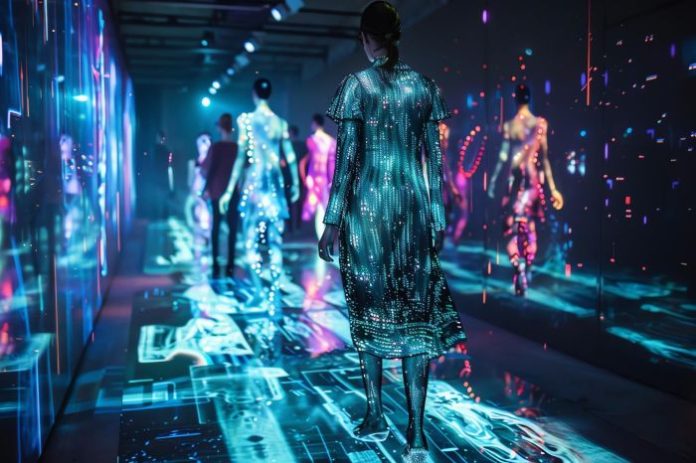Technology influences nearly every part of daily life, from the way people communicate to how they shop, eat, and even dress. The growing connection between tech and lifestyle choices has created an entirely new way of thinking about personal style. Fashion is no longer only about fabric and design. It now involves apps, digital platforms, connected devices, and intelligent materials that make style both functional and expressive. This merging of innovative fashion with technology continues to reshape industries while setting the stage for how people choose to present themselves in the future.
Table of contents
- The Digital Shift in Personal Style
- Wearable Technology as Everyday Fashion
- Eyewear and the Fusion of Tech and Style
- The Role of Data in Style Decisions
- Social Media Trends as Innovative Fashion Drivers
- Sustainability and Tech-Driven Solutions
- Innovation in Materials and Textiles
- Tech-Enhanced Shopping Experiences
- Challenges at the Intersection of Tech and Style
- Looking Ahead at Tech and Innovative Fashion Integration
The Digital Shift in Personal Style
Clothing and accessories used to be purchased based on availability in local stores. Now, digital shopping platforms have expanded choices to a global scale. Anyone can view designs from across the world with a few clicks. Beyond access, digital tools have introduced personalization in once unimaginable ways. Artificial intelligence within e-commerce platforms studies browsing history and purchase behaviors to suggest items that align with a person’s taste.
Social media has further amplified this shift. Platforms like Instagram and TikTok have turned style into a daily visual statement, where what people wear is instantly shared with a large audience. Influencers and micro-creators introduce new brands and push trends forward in real time. Technology is not only shaping how people discover style but also how social spaces validate it.
Wearable Technology as Everyday Fashion
People used to see wearables as niche gadgets. Today, they have become integral to fashion. People integrate watches, fitness trackers, and even smart rings into their daily outfits. These devices track health, manage notifications, and even allow contactless payments, all while blending seamlessly into personal style.
Designers are becoming increasingly aware of the demand for wearables that feel natural to wear. Smart clothing with sensors woven into the fabric is now being developed to monitor posture, heart rate, and hydration. Eyewear is also entering this space as smart glasses evolve, offering augmented reality experiences that merge digital information with real-world surroundings. The line between device and accessory continues to fade, making fashion more functional without losing its aesthetic value.
Eyewear and the Fusion of Tech and Style
Eyewear has always been a symbol of personal identity, but it has recently experienced one of the biggest transformations. Beyond vision correction, eyewear now embodies innovation, status, and design. Designers are engineering frames with lighter materials, flexible construction, and enhanced durability. At the same time, fashion houses and technology developers are collaborating to create glasses that integrate screens, voice assistants, and even camera systems.
Consumers are also paying closer attention to which eyewear brands best match their lifestyle. Many eyewear and fashion brands are pushing boundaries by combining function with high fashion, ensuring that glasses are more than just a necessity. With so many options available, eyewear is now viewed as an extension of style and technology together. This shift reflects the larger movement of blending fashion with digital experiences.
The Role of Data in Style Decisions
Technology has placed data at the center of decision-making, including in innovative fashion. Algorithms do more than recommend items. They learn what colors, cuts, and accessories a person tends to favor and present similar pieces before they even begin shopping. Virtual fitting rooms and augmented reality try-on tools allow customers to see how an outfit or accessory looks without ever leaving their home.
Retailers benefit equally. Data reveals which items resonate with customers, allowing companies to predict trends faster and restock popular items quickly. Designers can also rely on data to shape future collections. This constant exchange of information builds a system where style choices are both personal and predictive.
Social Media Trends as Innovative Fashion Drivers
Culture has always influenced style, but now digital culture defines what becomes mainstream. Social media trends can turn a little-known accessory into a must-have item within days. Brands are keenly aware of this cycle, often working with creators to introduce new products through platforms where audiences gather most.
For individuals, this influence goes both ways. Consumers are not only inspired by trends but also take part in shaping them. Personal videos, shared outfits, and curated lifestyle posts contribute to broader cultural conversations about fashion. This two-way exchange between brands and consumers highlights the way technology has turned personal style into a collective experience.
Sustainability and Tech-Driven Solutions
One of the most pressing issues in fashion is sustainability. Technology has introduced tools that help address waste and resource use. Brands are developing fabrics from recycled plastics and plant-based fibers, supported by tech-driven production methods that reduce environmental impact.
Tracking tools now allow consumers to see the origin of their clothing and the conditions under which designers made it. This creates more accountability for companies and more transparency for buyers. Apps and online platforms also encourage secondhand shopping, rental services, and resale markets, making it easier for consumers to participate in sustainable style practices.
Innovation in Materials and Textiles
The materials used in clothing are becoming smarter. Textiles can now adapt to body temperature, repel water without harmful chemicals, and even charge small devices using solar fibers. These innovations make clothing more interactive and responsive to the environment.
Nanotechnology has also entered the textile industry, making fabrics stain-resistant and longer-lasting. By combining science with design, designers can introduce new fabrics that not only look appealing but also solve everyday problems. These changes influence what people expect from fashion and how companies design their products.
Tech-Enhanced Shopping Experiences
Shopping is no longer limited to visiting a store or browsing a website. With augmented reality, customers can project digital outfits onto their own reflection through their phone’s camera. Smart mirrors in physical stores allow people to try on clothes virtually, showing different sizes and colors instantly.
AI chatbots are improving customer service by answering questions, offering recommendations, and guiding people through purchasing decisions. These tools make shopping more efficient while creating a personalized connection between the consumer and the brand. The combination of technology and retail continues to evolve, ensuring that fashion is not just seen but experienced.
Challenges at the Intersection of Tech and Style
While the connection between technology and fashion creates opportunities, it also presents challenges. Data privacy is a significant concern as platforms collect increasing amounts of personal information. There are also questions about accessibility, since not every consumer has the same level of access to digital tools or smart devices.
Additionally, the rapid pace of technological advancement can make items outdated quickly, creating pressure for both consumers and companies to keep up. Balancing the excitement of innovation with the responsibility of ethical production will be an ongoing challenge in the industry.
Looking Ahead at Tech and Innovative Fashion Integration
The future of fashion will continue to rely on technology for inspiration, production, and expression. As more wearable devices become commonplace and smart textiles grow in capability, clothing will take on new roles beyond aesthetics. Style will serve as both personal expression and functional technology.
For consumers, this means more options than ever before to align fashion with lifestyle needs. From data-driven personalization to innovative eyewear, the connection between technology and style is only growing stronger. What innovative fashion people wear will increasingly reflect not only their personality but also the digital tools that shape their lives.











